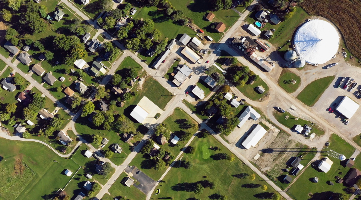- How global threat actors are weaponizing AI now, according to OpenAI
- The viral Air Purifier Table is my smart home's MVP (and it's on sale for $179)
- Grab the Galaxy S25 Edge for $170 off and get a free Amazon gift card - but act fast
- How I learned to stop worrying and love my health tracker
- I found a free iPhone 16 deal that doesn't require a trade-in (and applies to Pro models, too)
RDOF Technology and Systems Designs – Cisco Blogs

The Rural Digital Opportunity Fund Phase I Auction Procedures Public Notice, published on May 19, 2020, requires winning RDOF bidders to complete a Long Form Application (FCC Form 683), including a detailed technology and system design plan. The plan is intended to explain how the design and technologies that the winning bidder has chosen will meet the relevant performance requirements they have guaranteed in making their bid, including information regarding quality, coverage, voice service, network management, and on-going operations.
If you’re a winning bidder, the design plan you submit will provide the FCC with a look at the background work you presumably did in preparation for placing your bid in the first place. But the work you’ve done to get to this point is largely internal. The next step will deliver your plans, engineering, and operational strategies to the federal government. It can be a bit of a daunting prospect. Of course, you need not disclose any confidential trade secrets or commercial information in your submission, but the process will require a thorough analysis of your capacity to make good on the promises you made in your bids.
As your engineering teams prepare to deploy the network in the communities where you’ve won bids, you may discover unforeseen requirements that were not considered as a calculation on your original bids. As a result, your final system plans may vary somewhat from the originals. Now that you’ve been declared a winner, impacted communities might offer to help or you might learn about existing technology infrastructure that you can leverage. These should all be reflected in your long form application.
Your award amount won’t change, even if your anticipated costs are less than your original assessment, you have an opportunity through the long form to communicate a (more or less) final version of your plan with the FCC team that is administering the funding to help make it possible.
The Network Requirements
Your network design will need to describe how you will deliver the performance levels you’ve guaranteed in your bid to at least 95% of the required number of locations in each state by the end of the six-year build-out period and for the duration of the 10-year support term, assuming a 70% subscription rate by the final service milestone.
Your Network Design
You have a fair amount of flexibility in your method of delivering services. And as we’ve discussed above, as long as you abide by the material guarantees you made in your bid and short form, you can make modifications to your network design plan that depart from the plan you made in preparation for your bid. That said, in addition to a network design diagram, your network plan should include:
- middle mile/backhaul topology, architecture, design, and technologies
- interconnection architecture, design, and technologies solution to connect to the Internet, including the likely service providers, link data-rate/size, locations, dual-homing, and multi-homing characteristics
- the architecture that will be used to provide voice service, including whether these services will be provided: 1) internally, 2) through a managed voice service provider, 3) through a voice over the top service, or 4) through another type of voice service
- the network’s scalability to support customer growth and network data usage growth to account for: 1) ever-increasing application requirements, 2) increasing quality demands, and 3) lower response/latency demands for ever-increasing usage of highly interactive applications
- the design and features that you plan to implement that will: improve reliability (such as redundancy) for equipment, links, and software; dual-homing; and multi-homing connectivity
- network infrastructure ownership, including which parts of the network, will use your or another party’s existing and new network facilities, leased lines, transit services, and rented tower space for radios.
- technical information about the design methods, “rules of thumb,” and engineering assumptions you used to size the capacity of the network’s nodes or gateways, links, and wireless base stations
- plans to meet peak period end-to-end performance requirements for the path from consumer premises to the Internet
Your network design plan and an associated diagram will likely be the most scrutinized aspects of your long-form application, and it will inform subsequent elements of that application, including the project plan, network management strategy, and terrestrial and/or satellite technology configurations.
The long-form is a requirement to obtain federal RDOF funding, and it requires disclosure of a wide range of technical, operational, and financial data – some of which you may be developing just for the purpose of completing the form. But similarly to the way in which the hundreds of hours your engineers spent preparing your bid strategy can be leveraged to inform your long form application, the deep planning and outreach you conduct to finalize your long form application can simplify the next ten years of implementation.
Find out more about building more flexible and cost-efficient networks designed to deliver rural broadband connectivity in this Cisco webinar.
Share:

